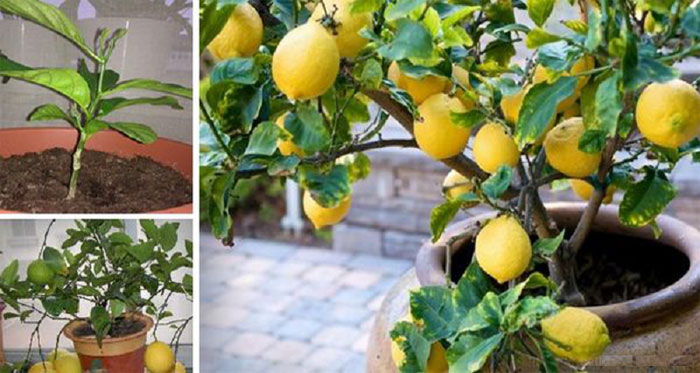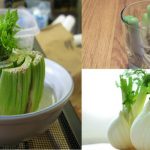My sister makes her Caesar salad dressing from scratch, which calls for fresh lemon juice. She squeezes the lemons by hand, which yields juice, and sometimes a few seeds… One time, I noticed a tiny, green shoot emerging from one of the seeds. It had sprouted! Question is, if you plant the seed, will it produce fruit someday?
Here’s the deal: As long as the seed is not damaged, and it did not dry out while you were doing the dishes, the odds are good that it will produce a plant.
The plant will have oval, shiny green leaves, fragrant winter flowers, and a better chance at usable fruit than sweet citrus like oranges, which need hot summers to develop sugars and seldom bear fruit in confinement (potted, indoors).
Lemons on the other hand, do not mind life as a houseplant and will be comfortable in containers as long as the container is large and the soil in them is well drained. There are a couple downsides, however: for one, seed-grown lemon trees are often a gamble when it comes to height–you may need a 20-foot ceiling!
According to Leslie Land, garden writer for the New York Times, if you are serious about citrus, consider trees that are sold for growing in containers because they are generally dwarf varieties, like the Meyer lemon, or grafted onto dwarfing rootstock.
Meyer lemons are hardier than other lemons and more generous about fruiting. During warm summer periods, you can set them outside for a dose of the real stuff. According to Rain tree Nursery, they produce medium-size d juicy lemons. And here is an added bonus:
The waxy white blossoms are lovely and fragrant.
Tips for growing your indoor lemon tree
- WHAT TO LOOK FOR: If you purchase your Meyer lemon from a nursery, look for plants that are at least 2 to 3 years old. Improved Meyer lemons are also suitable as houseplants. They can be maintained at 3 to 5 feet tall and if you have the knack, lemon trees make wonderful Bonsai specimens.
- SOIL: Like most houseplants, citrus prefer a slightly acid, all-purpose mix, which you can get by using a peat-moss based growing mix. (Remember, you get what you pay for, so do not go for the cheap products.)
- TEMPERATURE: Lemon trees thrive in a normal temperature range of 70 degrees Fahrenheit during day to 55 degrees Fahrenheit at night. TIP: Though the plants are evergreen they will go into dormancy and stop growing below 54 degrees F.)
- LIGHT: Set your lemon tree in full sun from a southern exposure. Trees need lots of light. If that is not possible, supplement the light by installing 40-watt fluorescent shop lights above the plants — especially important in the winter, when they need 12 hours of light.
- MOISTURE: You will need to keep the soil evenly moist and since most interiors are quite dry, mist your plant often — daily if you can. Give your lemon tree a shower occasionally. (They loved to be wiped down gently with a sponge, like the one at right.)
- POLLINATION: When you grow plants indoors, bees and insects cannot pollinate them. So you need to use a paintbrush or cotton swab to rub pollen within the flower. Sometimes they will produce fruit without doing this, but it’s a good idea to increase your chances!
If I have scared you off from growing lemons indoors, my apologies. But do not give up! Consider the alternatives: Kumquats, for example, will give you the same year-round gifts of shiny leaves, fragrant flowers and delicious fruit while giving you far less grief.
Have fun! Cheers to you!




